人教课标版B9 U4Exploring Plants Using language(课件29张)
文档属性
| 名称 | 人教课标版B9 U4Exploring Plants Using language(课件29张) | 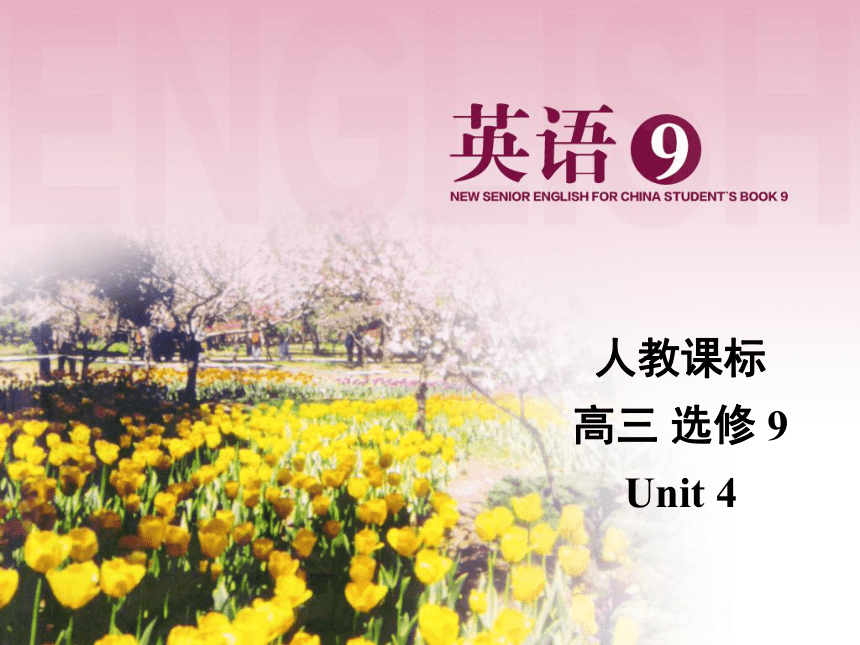 | |
| 格式 | zip | ||
| 文件大小 | 4.0MB | ||
| 资源类型 | 教案 | ||
| 版本资源 | 人教版(新课程标准) | ||
| 科目 | 英语 | ||
| 更新时间 | 2015-10-12 22:57:19 | ||
图片预览

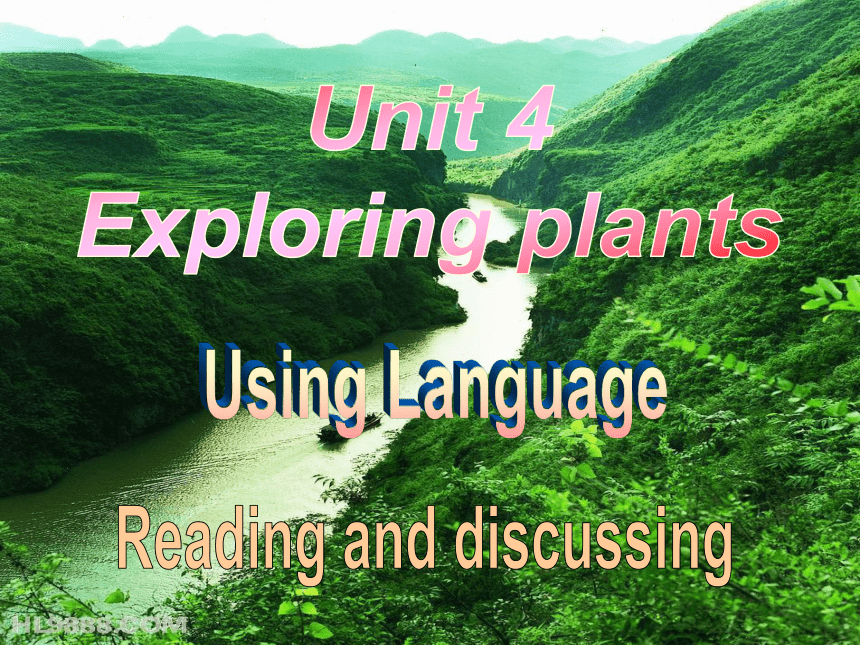
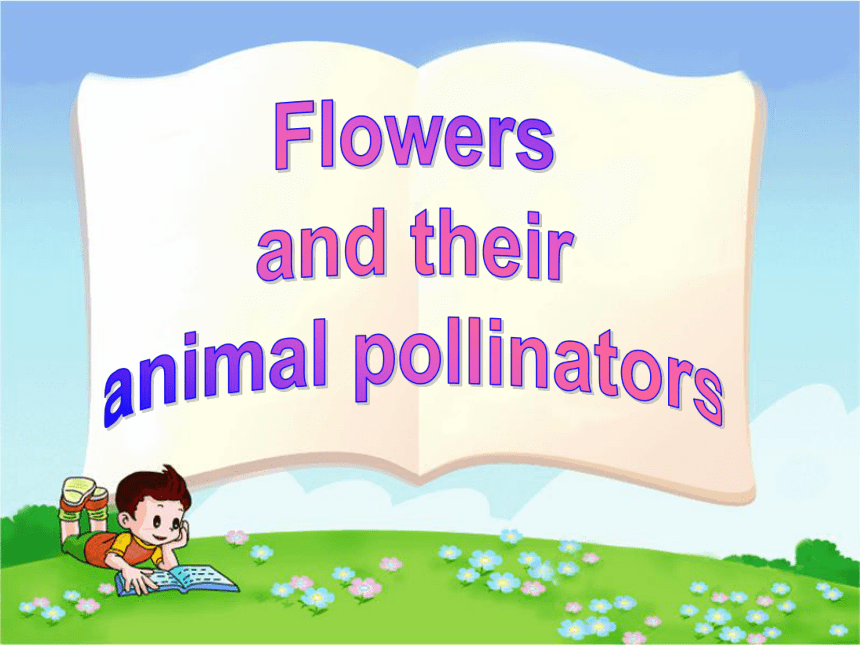

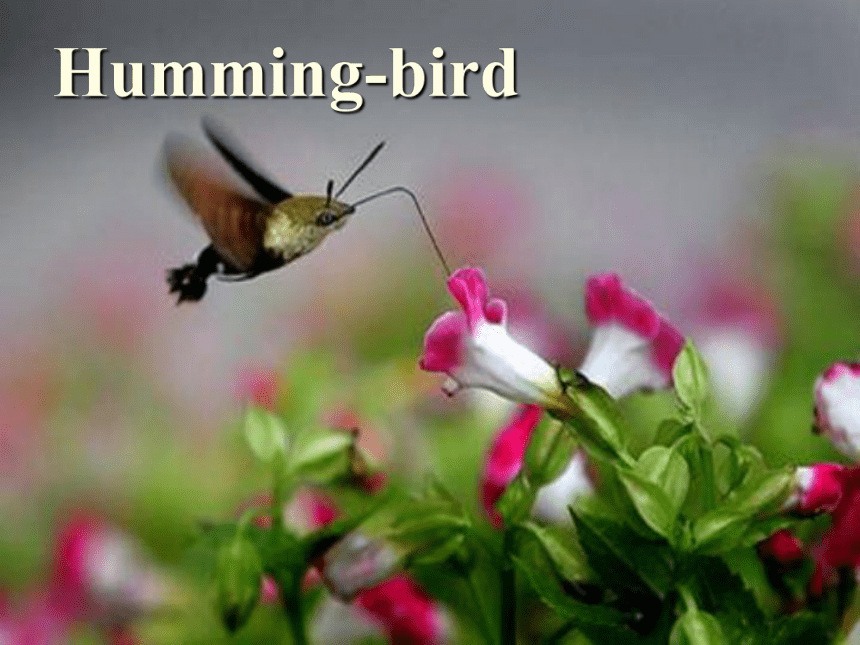
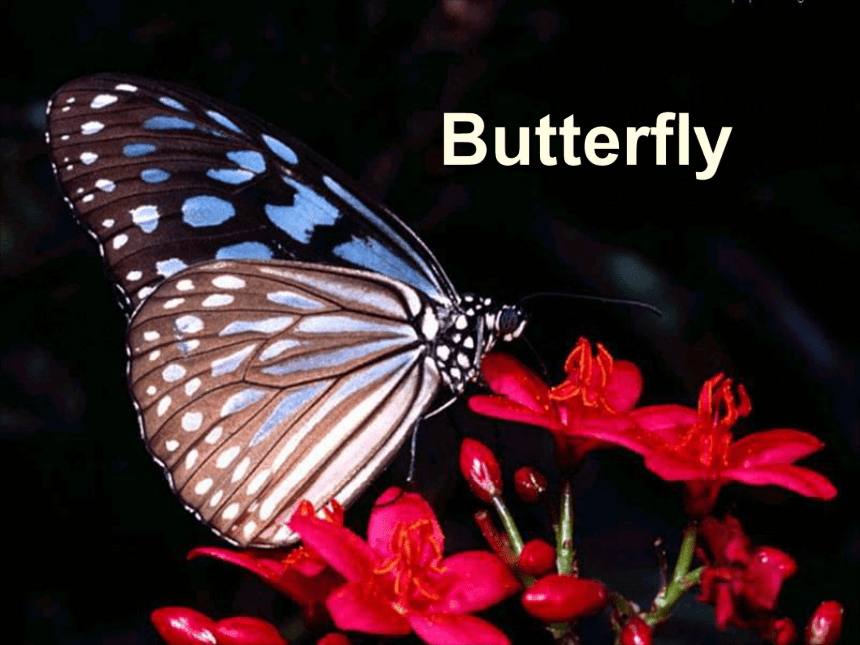

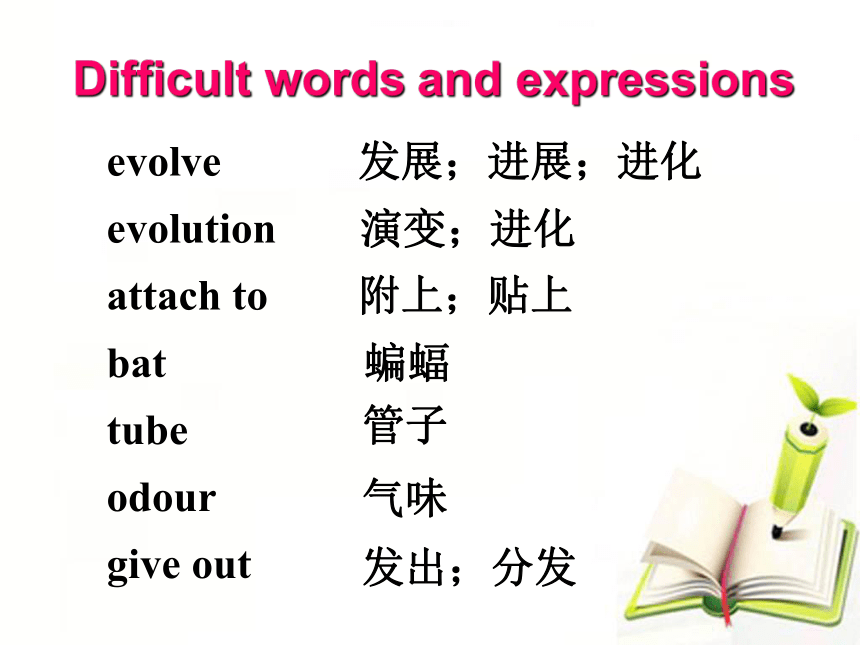
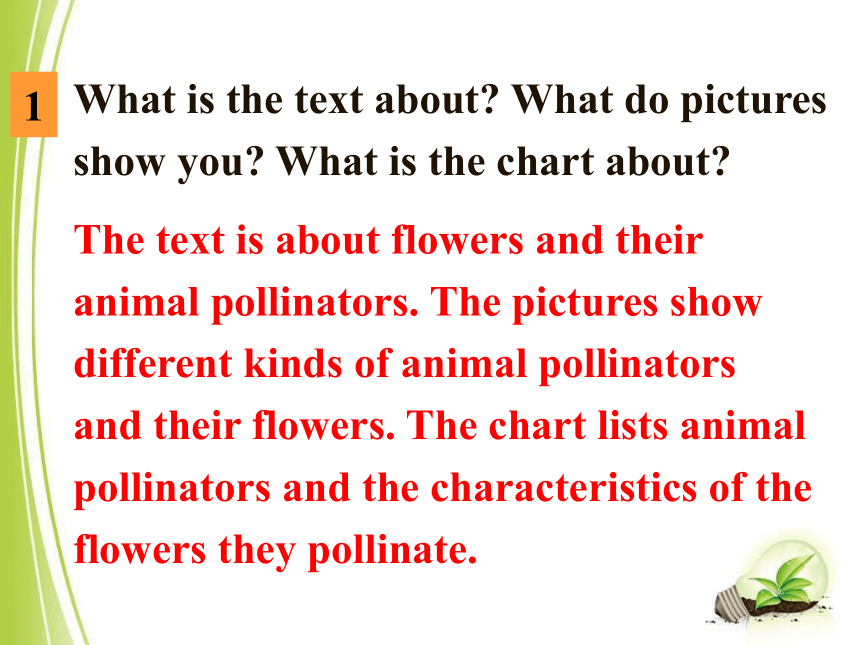
文档简介
课件29张PPT。人教课标
高三 选修 9
Unit 4Reading and discussingUnit 4
Exploring plantsUsing LanguageFlowers
and their
animal pollinatorsBeeHumming-birdButterflymoth Difficult words and expressionsevolve
evolution
attach to
bat
tube
odour
give out发展;进展;进化发出;分发气味管子演变;进化附上;贴上蝙蝠What is the text about? What do pictures show you? What is the chart about?1The text is about flowers and their animal pollinators. The pictures show different kinds of animal pollinators and their flowers. The chart lists animal pollinators and the characteristics of the flowers they pollinate.Read the text and answer the questions.1. What is the advantage for animals of visiting flowers?
Animals get food called nectar from the flowers.
2. Why do some plants need animals?
Some plants need animals to pollinate them.23. How does an animal pollinate a flower?
An animal pollinates a flower by collecting pollen from a flower and passing it onto another flower.4. What features of a flower are
important in attracting animal pollinators?
The features of a flower that are important in attracting animal pollinators are its colour, shape, size and smell.5. What is nectar?
Nectar is a sweet liquid produced by flowers and collected by bees.
6. What kinds of animals are most flowers pollinated by?
Most flowers are pollinated by bees, moths and butterflies.Are these statements true or false?1. Bees follow coloured lines to the nectar inside the flower.
2. Flowers that are white or pale can be seen by night pollinators.
3. Butterflies are attracted to sweet-smelling flowers. TTF34. Bats pollinate flowers at night.
5. Flower colour is not important to hummingbirds.
6. All pollinators need to land on the flower if they are to find the nectar. TFFFind other nouns in the chart that mean the same as “smell”. List adjectives from the chart that are used to describe different kinds of smells.Nouns that mean “smell”: _____________.
Adjectives that describe smells:
_________________________________ __________________.odour, perfume 4delicate, fragrant, odourless, strong, sweet, musty, fruity1. Over time, many flowering plants and their animal pollinators have evolved together. evolve 常用作不及物动词,意为“进化,形成,发展”,常与 from 搭配使用,意为“从……发展而来”。如:Language pointse.g. The present British political system has evolved over several centuries.
英国的现行政治制度是经过几个世纪 逐步发展而成的。Nature strives to be free, free to evolve.
自然界尝试去成为自由的,自由去进化。★ 其名词形式为 evolution, 意为 “进化,演变,发展,渐进”。
e.g.
Darwin’s theory of evolution has been widely accepted.
达尔文的进化论已经被广泛接受。The farmers benefit a lot from the evolution of farming methods.
耕种方法的发展使农民大大受益。
★ 其形容词形式为 evolutionary, 意为“演变的,进化的,逐渐发展的”。如:
The change has been evolutionary.
变化是渐进的。[小试] 翻译下列句子。
这位设计师逐渐形成了自己的风格。
2. 这家公司已经发展成为一家大机构。The designer gradually evolved the style of his own.
The company has evolved into a large organization.2. Pollen becomes attached to the animal during its visit to a flower and is then passed on to another plant’s blossom on its next visit. attach sth. to sth. 表示“把……附加、系 上或缚在……上” 。如:
He attached a label to each piece of luggage. 他把每件行李都贴上标签。 attach to sb. / sth. 表示“(使)与……有联系,与……有关联”。如:It was just an accident and no blame attaches to either of you.
这只是一个意外,你俩一点责任也没有。 We should attach primary importance to the development of economy.
我们应把经济发展放在首要位置。 attach importance / value / weight, etc. to sth. 表示“认为……有重要性/价值/分量等”。如: be attached to 表示 “(变得)喜欢,依恋,对……有感情”。如:
I am much attached to my family.
我对我的家很依恋。
be attached to 还表示“附属于”。如:
This middle school is attached to a normal college.
这所中学附属于一所师范院校。 attach oneself to sb. / sth. 表示“依附某人,参加某事”。如:
He attached himself to the group of mountain climbers.
他参加了那个登山队。 翻译下列句子。
1. The hospital is attached to that university.
2. A young man attached himself to me at the party and I couldn’t get rid of him.这家医院附属于那所大学。
在聚会上有个年轻人总缠着我,我简直无法摆脱他。3. 在年底前你将一直属于这一部门。
4. 我们已变得十分留恋这所房子,舍不得搬家。You’ll be attached to this apartment until the end of the year.
We’ve grown very attached to this house and wouldn’t move.Thank you!
高三 选修 9
Unit 4Reading and discussingUnit 4
Exploring plantsUsing LanguageFlowers
and their
animal pollinatorsBeeHumming-birdButterflymoth Difficult words and expressionsevolve
evolution
attach to
bat
tube
odour
give out发展;进展;进化发出;分发气味管子演变;进化附上;贴上蝙蝠What is the text about? What do pictures show you? What is the chart about?1The text is about flowers and their animal pollinators. The pictures show different kinds of animal pollinators and their flowers. The chart lists animal pollinators and the characteristics of the flowers they pollinate.Read the text and answer the questions.1. What is the advantage for animals of visiting flowers?
Animals get food called nectar from the flowers.
2. Why do some plants need animals?
Some plants need animals to pollinate them.23. How does an animal pollinate a flower?
An animal pollinates a flower by collecting pollen from a flower and passing it onto another flower.4. What features of a flower are
important in attracting animal pollinators?
The features of a flower that are important in attracting animal pollinators are its colour, shape, size and smell.5. What is nectar?
Nectar is a sweet liquid produced by flowers and collected by bees.
6. What kinds of animals are most flowers pollinated by?
Most flowers are pollinated by bees, moths and butterflies.Are these statements true or false?1. Bees follow coloured lines to the nectar inside the flower.
2. Flowers that are white or pale can be seen by night pollinators.
3. Butterflies are attracted to sweet-smelling flowers. TTF34. Bats pollinate flowers at night.
5. Flower colour is not important to hummingbirds.
6. All pollinators need to land on the flower if they are to find the nectar. TFFFind other nouns in the chart that mean the same as “smell”. List adjectives from the chart that are used to describe different kinds of smells.Nouns that mean “smell”: _____________.
Adjectives that describe smells:
_________________________________ __________________.odour, perfume 4delicate, fragrant, odourless, strong, sweet, musty, fruity1. Over time, many flowering plants and their animal pollinators have evolved together. evolve 常用作不及物动词,意为“进化,形成,发展”,常与 from 搭配使用,意为“从……发展而来”。如:Language pointse.g. The present British political system has evolved over several centuries.
英国的现行政治制度是经过几个世纪 逐步发展而成的。Nature strives to be free, free to evolve.
自然界尝试去成为自由的,自由去进化。★ 其名词形式为 evolution, 意为 “进化,演变,发展,渐进”。
e.g.
Darwin’s theory of evolution has been widely accepted.
达尔文的进化论已经被广泛接受。The farmers benefit a lot from the evolution of farming methods.
耕种方法的发展使农民大大受益。
★ 其形容词形式为 evolutionary, 意为“演变的,进化的,逐渐发展的”。如:
The change has been evolutionary.
变化是渐进的。[小试] 翻译下列句子。
这位设计师逐渐形成了自己的风格。
2. 这家公司已经发展成为一家大机构。The designer gradually evolved the style of his own.
The company has evolved into a large organization.2. Pollen becomes attached to the animal during its visit to a flower and is then passed on to another plant’s blossom on its next visit. attach sth. to sth. 表示“把……附加、系 上或缚在……上” 。如:
He attached a label to each piece of luggage. 他把每件行李都贴上标签。 attach to sb. / sth. 表示“(使)与……有联系,与……有关联”。如:It was just an accident and no blame attaches to either of you.
这只是一个意外,你俩一点责任也没有。 We should attach primary importance to the development of economy.
我们应把经济发展放在首要位置。 attach importance / value / weight, etc. to sth. 表示“认为……有重要性/价值/分量等”。如: be attached to 表示 “(变得)喜欢,依恋,对……有感情”。如:
I am much attached to my family.
我对我的家很依恋。
be attached to 还表示“附属于”。如:
This middle school is attached to a normal college.
这所中学附属于一所师范院校。 attach oneself to sb. / sth. 表示“依附某人,参加某事”。如:
He attached himself to the group of mountain climbers.
他参加了那个登山队。 翻译下列句子。
1. The hospital is attached to that university.
2. A young man attached himself to me at the party and I couldn’t get rid of him.这家医院附属于那所大学。
在聚会上有个年轻人总缠着我,我简直无法摆脱他。3. 在年底前你将一直属于这一部门。
4. 我们已变得十分留恋这所房子,舍不得搬家。You’ll be attached to this apartment until the end of the year.
We’ve grown very attached to this house and wouldn’t move.Thank you!
